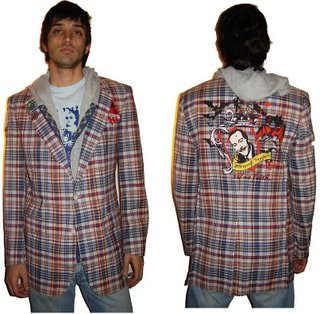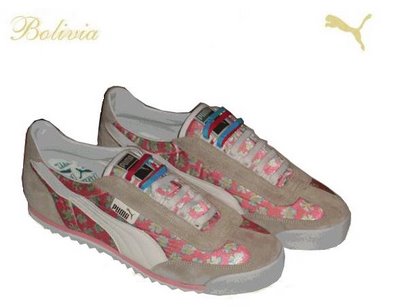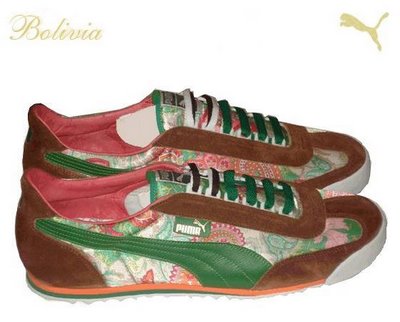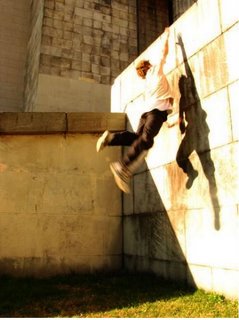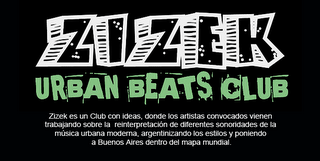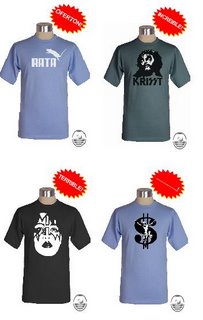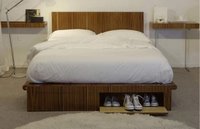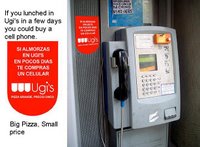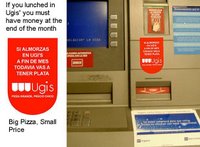
Tourism in Mp3 format
In Buenos Aires nowadays you don`t need a touristic guide to introduce yourself in history and touristic places. The Buenos Aires’ government in his website bue.gov.ar launched a guide series with famous voices of journalists, writers, actors, and social communicators. The guides tell about streets and building stories of the Capital of Argentina.
12 circuit stops could be choice in the website. Plaza de Mayo (by Mario Pergolini), Palermo Viejo (by Magdalena Ruíz Guiñazú) , Puerto Madero (by Nacha Guevara), Abasto (by Antonio Carrizo), La Boca (by Eduardo de la Puente).
Every journey have a map to be print.
Description of La Boca circuits stops;
1 - La Boca neighborhood.
A neighborhood unique in its architecture and its culture. Historians explain the origins of an area filled with immigrants, tenement houses and football.
Duration: 2 min
2 - Quinquela Martin, his house…his life.
The great artist Benito Quinquela Martin was one of the most relevant personalities of La Boca. Abandoned by his birth mother in an orphanage of the area, he describes his childhood in the neighborhood.
Duration: 2 min
3 - Vuelta de Rocha
In its beginnings, La Boca was a city slum, filled with shanties and “pulperias” (general stores). The port activity gave it a definite identity. This is how an old neighbor describes it. The tango “La Vuelta De Rocha” can be listened to as well.
Duration: 1 min
4 - Caminito
One of the most defining symbols of Buenos Aires hides behind the sheet metal and colorful houses of this little street of La Boca. To listen to: “Caminito”, and what Quinquela Martin thought of this tango piece, which found its inspiration in this place.
Duration: 1 min
5 - Juan de Dios Filiberto, tango in La Boca.
Juan de Dios Filiberto, who wrote the music for “Caminito”, is a synonym of tango in La Boca. Filiberto gives his opinion on the lyrics of his tango pieces.
Duration: 1 min
6 - Museum of Fine Arts (Museo de Bellas Artes)
Benito Quinquela Martin donated this building to the neighborhood that most inspired his art. The artist himself tells us the purpose of this museum and Perez Celis describes Quinquela as an artist.
Duration: 1 min
7 - The Bridge of La Boca, a postcard scene.
One of the outstanding symbols of the neighborhood of La Boca is this majestic iron bridge constructed over the Riachuelo. Quinquela Martin chose it as scenery for many of his paintings.
Duration: 1 min
8 - The Republic of La Boca
Throughout history, there were three attempts to found the Republic of La Boca. This is what Hugo Banchero, grandson of one of the founders, and historian Jose Gobello, tell us.
Duration: 2 min
9 - Boca Juniors Sports Club.
The history of one of the most important football teams in Argentina. Listen to Maradona talking about Boca Stadium and artist Perez Celis describing why he did the murals at the Club.
Duration: 2 min
10 - Player number 12
The sound of the voice of the fans is felt at Boca Stadium like in no other stadium. This passion for football inspired films like “El hincha” (The Fan), with Enrique Santos Discepolo. A fragment of this movie and the voice of Diego Maradona talking to the Boca fans.
Duration: 2 min
11 - Maradona, the story of an outstanding figure.
The biography of one of the most famous football players in the world. To listen to: The most memorable goal of Maradona in the 1986 World Cup broadcast by Victor Hugo Morales, and National Team player number 10 telling us himself what glory means to him.
Duration: 3 min
12 - Catalinas warehouse, “murga” culture.
By means of theater, a group of people from La Boca recover the history of the neighborhood. A fragment of the show El Fulgor Argentino and an interview with its director, Adhemar Bianchi.
Duration: 2 min
Turismo en formato Mp3
En Buenos Aires ya no hace falta un guía para recorrer sitios históricos y turísticos.
El gobierno porteño en su sitio web http://www.bue.gov.ar/audioguia lanzó unas guías locutadas por famosos que hablan y cuentan la historia de las calles y edificios de la capital Argentina.
La novedad surge que están en formato MP3 y se pueden bajar a cualquier reproductor para ser escuchadas en el recorrido por la ciudad.
Hay 12 recorridos disponibles. Plaza de Mayo (por Mario Pergolini), Palermo Viejo (por Magdalena Ruíz Guiñazú) , Puerto Madero (por Nacha Guevara), Abasto (por Antonio Carrizo), La Boca (por Eduardo de la Puente).
Cada recorrido posee un mapa para ser impreso.
Descripción de los recorridos en La Boca;
1 - Barrio de La Boca
Un barrio único en su arquitectura y en su cultura. Historiadores explican cómo fue el origen de esta zona de fútbol, conventillos e inmigrantes.
Duración: 1 min
2 - Quinquela Martín, su casa… su vida
El magnífico pintor Benito Quinquela Martín fue una de las figuras más relevantes de La Boca. Abandonado por su madre natural en un orfanato de la zona, él mismo cuenta cómo fue su infancia en el barrio.
Duración: 2 min
3 - Vuelta de Rocha
En sus comienzos, La Boca era apenas un arrabal poblado por ranchos y pulperías. Fue la actividad portuaria lo que le dio una identidad definida. Así lo describe un viejo vecino del barrio. Además el tango “La Vuelta de Rocha” para escuchar.
Duración: 1 min
4 - Caminito
Uno de los mayores símbolos de Buenos Aires se esconde entre las chapas coloridas de las casas de esta callecita de La Boca. Para escuchar: “Caminito” y lo que pensaba Quinquela del tango inspirado en este lugar.
Duración: 1 min
5 - Juan de Dios Filiberto, tango en La Boca
Juan De Dios Filiberto —autor de la música de “Caminito”— es sinónimo de tango en La Boca. Filiberto opina de las letras de sus tangos.
Duración: 1 min
6 - Museo de Bellas Artes
Benito Quinquela Martín donó este edificio al barrio que le sirvió como fuente de inspiración. Él mismo cuenta cuál era su objetivo con este museo y Pérez Celis describe a Quinquela como artista.
Duración: 1 min
7 - El puente de La Boca, una postal
Uno de los mayores símbolos del barrio de La Boca es este imponente puente de hierro que se alza sobre el Riachuelo. Quinquela Martín lo eligió como escenario de muchas de sus pinturas.
Duración: 1 min
8 - La República de La Boca
A lo largo de la historia tres veces intentaron fundar La República de La Boca. Así lo cuentan Hugo Banchero, nieto de uno de los fundadores, y el historiador José Gobello.
Duración: 2 min
9 - Club Atlético Boca Juniors
La historia de uno de los clubes de fútbol más importante de la Argentina. Escuchá a Maradona hablando del estadio de Boca y el artista Pérez Celis contando porqué realizó los murales del club.
Duración: 2 min
10 - El jugador número 12
La voz de los fanáticos se siente en el estadio de La Boca como en ningún otro. La pasión por el fútbol inspiró películas como El hincha, con Enrique Santos Discépolo. Un fragmento de la película y la voz de Diego Maradona hablándole a la hinchada de Boca.
Duración: 2 min
11 - Maradona, la historia de un grande
La biografía de uno de los jugadores de fútbol más famosos del mundo. Para escuchar: el gol más recordado de Maradona en el mundial de 1986 relatado por Víctor Hugo Morales y el mismo número 10 de la selección cuenta qué es para él la gloria.
Duración: 3 min
12 - El Galpón de Catalinas, la cultura de la murga
Por medio del teatro, el grupo de vecinos de La Boca recupera la memoria del barrio. Un fragmento del espectáculo El fulgor argentino y una entrevista a su director, Adhemar Bianchi.
Duración: 2 min








